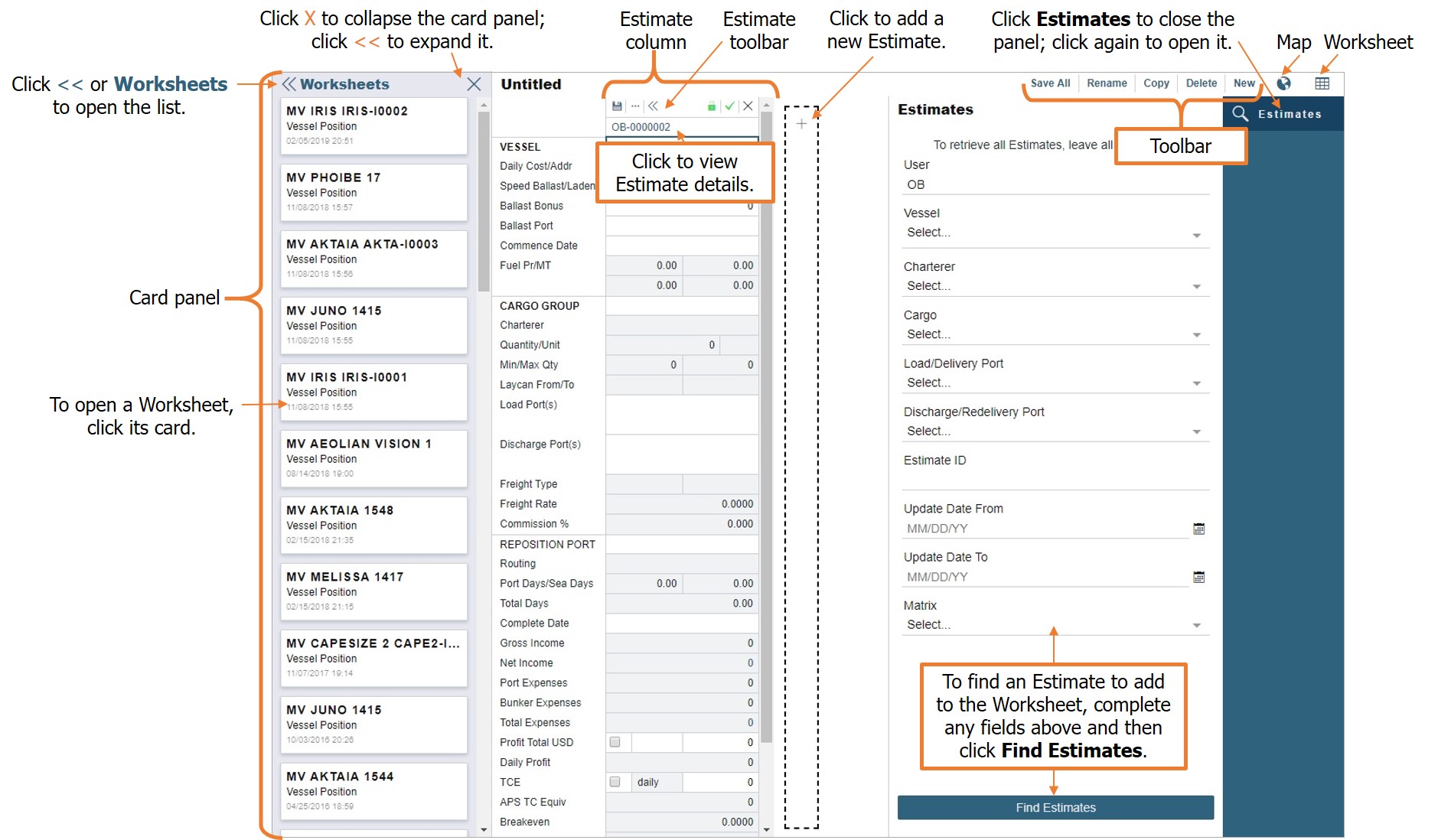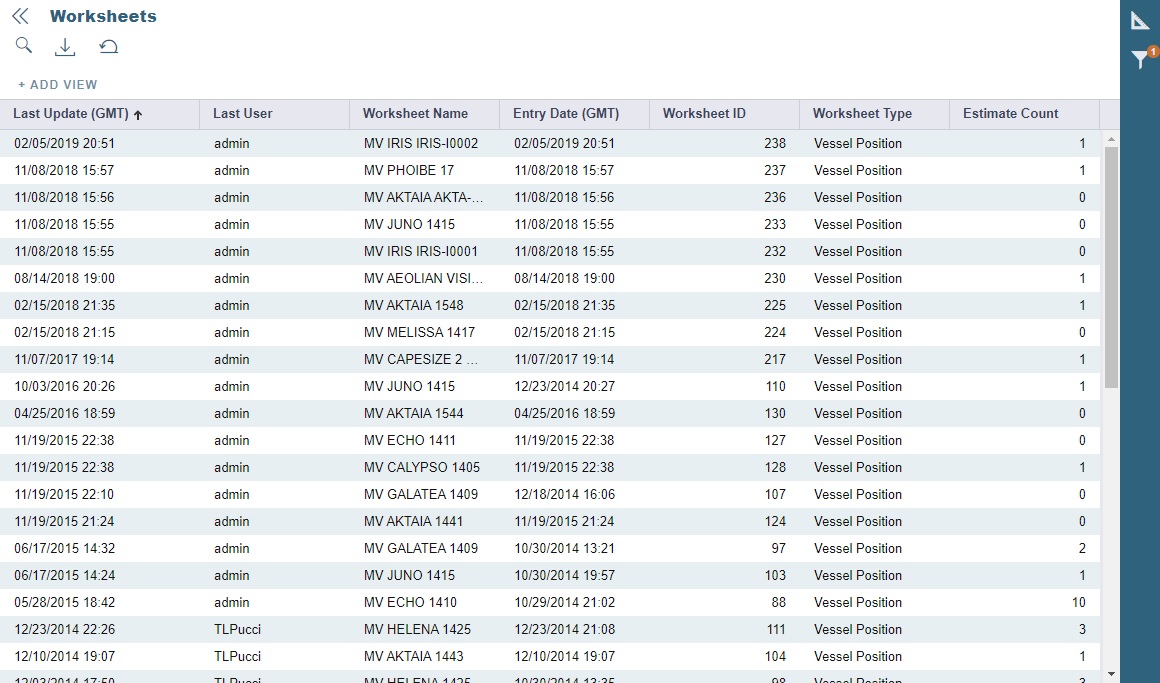IMOS - Worksheet - Estimates
Home > Chartering > Worksheet - Estimates
From the Feature Board: You can now reorder estimates in the worksheet by dragging and dropping them.
A Worksheet has one or more Estimates in columns. You can add Estimates, evaluate options, select an intended Estimate, and save to show the rationale behind your decisions.

Double arrows enable you to expand (>>) or collapse (<<) sections of the Worksheet.
The Worksheets list is collapsed into a card panel by default. Expanding the list navigates away from the current Worksheet.
You can collapse or expand Estimate columns on the current Worksheet. Collapsed columns are remembered per Worksheet.
As with any other details view, you can navigate to a different record by clicking its card or return to the list by clicking its Name.
To view Estimates on a map, where you can adjust itineraries, click:

To return to the Worksheet, click:

Use tools on the Estimate column toolbar to create, save, copy, or delete records.
To access Estimate details, click its ESTIMATE ID link.
Toolbar
The following buttons appear on the Worksheet toolbar:
Save All: Save all Estimates in the Worksheet. If you save an Untitled Worksheet, its name changes to quicksave; rename the Worksheet for future reference.
Rename: Rename the Worksheet and then click Save All to save your changes.
Note: If the Worksheets list still shows the old Worksheet name, refresh your browser.Copy: Create a copy of the Worksheet and its Estimates.
Delete: Delete the Worksheet.
New: Create a new Worksheet.
Adding Estimates to a Worksheet
To add columns to a Worksheet, you can create Estimates, copy them, or search for them on the Find Estimate panel.
Worksheets List
The Worksheets list contains all Worksheets that you have the right to view (you were the last user to save them). To access the list, on a Worksheet, click the Worksheets heading.

As with any other list, you can search, select, adjust, pin, filter, group, and sort columns, reset to the default view, save user views, and export.
To view a Worksheet, click its row, or click << to return to the current Worksheet.
